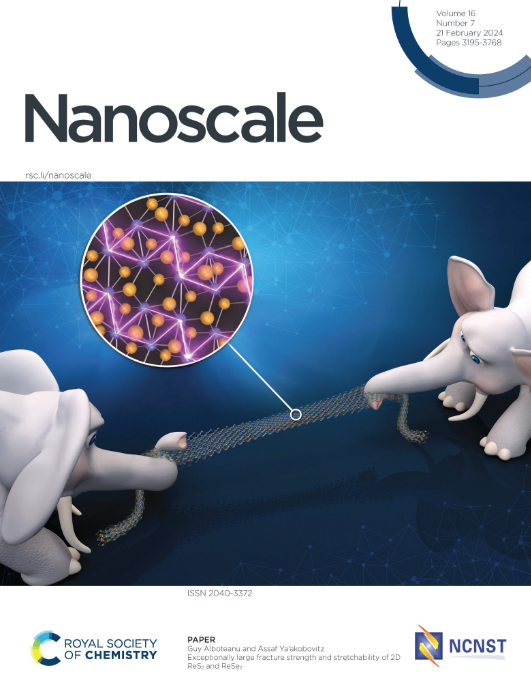Landé g-factors of electrons and holes strongly confined in CsPbI3 perovskite nanocrystals in glass
IF 5.8
3区 材料科学
Q1 CHEMISTRY, MULTIDISCIPLINARY
引用次数: 0
Abstract
The Lande g-factor of charge carriers is a key parameter in spin physics controlling spin polarization and spin dynamics. In turn, it delivers information of the electronic band structure in vicinity of the band gap and its modification in nanocrystals provided by strong carrier confinement. The coherent spin dynamics of electrons and holes are investigated in CsPbI3 perovskite nanocrystals with sizes varied from 4 to 16 nm by means of time-resolved Faraday ellipticity at the temperature of 6 K. The Lande g-factors of the charge carriers are evaluated through the Larmor spin precession in magnetic fields up to 430 mT across the spectral range from 1.69 to 2.25 eV, provided by variation of the nanocrystal size. The spectral dependence of the electron g-factor follows the model predictions when accounting for the mixing of the electronic bands with increasing confinement resulting from a decrease of the nanocrystal size. The spectral dependence of the hole g-factor, changing from -0.19 to +1.69, is considerably stronger than expected from the model. We analyze several mechanisms and conclude that none of them can be responsible for this difference. The renormalizations of the electron and hole g-factors roughly compensate each other, providing spectral independence for the bright exciton g-factor with a value of about +2.2.求助全文
约1分钟内获得全文
求助全文
来源期刊

Nanoscale
CHEMISTRY, MULTIDISCIPLINARY-NANOSCIENCE & NANOTECHNOLOGY
CiteScore
12.10
自引率
3.00%
发文量
1628
审稿时长
1.6 months
期刊介绍:
Nanoscale is a high-impact international journal, publishing high-quality research across nanoscience and nanotechnology. Nanoscale publishes a full mix of research articles on experimental and theoretical work, including reviews, communications, and full papers.Highly interdisciplinary, this journal appeals to scientists, researchers and professionals interested in nanoscience and nanotechnology, quantum materials and quantum technology, including the areas of physics, chemistry, biology, medicine, materials, energy/environment, information technology, detection science, healthcare and drug discovery, and electronics.
 求助内容:
求助内容: 应助结果提醒方式:
应助结果提醒方式:


